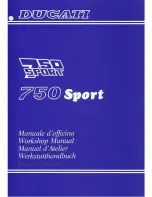
18
N100-5
3
PINLOCK
®
INNER VISOR DISASSEMBLY
3.1 Remove the visor equipped with the PINLOCK
®
inner visor (see instructions
above).
3.2 Widen the visor and release the PINLOCK
®
inner visor from the pins (Fig.10).
3.3 Release the visor.
4
MAINTENANCE AND CLEANING
-
Remove the PINLOCK
®
inner visor from the visor. Using a damp and soft cloth,
gently clean it with neutral liquid soap. Remove the soap under running water.
-
Dry the visor with dry and warm air without wiping it.
-
To keep the features of the visor in good conditions over time, let the helmet dry
in a ventilated and dry place with the visor open after use. Keep it away from heat
sources and store it in a place away from direct light.
-
Do not use solvents or chemical products.
VISION PROTECTION SYSTEM (VPS)
The exclusive inner VISION PROTECTION SYSTEM (VPS) is a LEXAN™ (*) polycar-
bonate moulded sunscreen with scratch-resistant/fog-resistant treatment. It is very
simple and practical to use: just lower it to activate it or lift it to remove it from the field
of vision. It is useful in all sorts of situations, both on long journeys out of town and
shorter town trips.
Moreover, the fastening system allows you to assemble and disassemble the sunscreen
without any tools to allow ordinary maintenance and cleaning operations.
1
VPS OPERATION
The VPS mechanism allows to activate the sunscreen by simply lowering it until it par-
tially covers the visor field of vision. In this way, the desired light transmittance reduc-
tion is achieved.
At any time, without operating the visor, the VPS can be deactivated with a simple
movement and easily lifted up to restore the normal conditions of visibility and protec-
tion guaranteed by the approved helmet visor.
1.1 To activate the VPS, move the slider as in Fig.11 until you hear a click confirming
that the VPS is in the desired position.
The VPS is adjustable in a range of intermediate positions to ensure the best
comfort for the user with respect to the terms of use.
1.2 To deactivate the VPS, press the recovery button as shown in Fig.12 until the VPS
unlocks and moves automatically in standby position.
2
PRECAUTIONS FOR USE
The current approval standards (ECE22-05) state that the visor minimum light transmit-
tance levels must be greater than 80% when riding at night and not less than 50% when
riding during the day. For this reason, under particularly bright weather conditions, e.g.
very strong sunlight caused by high intensity and/or incidence of the sunbeams, the
use of sunglasses - which entail a transmittance much lower than 50% - turns out to
be advisable, if not absolutely necessary. This in order to reduce eye fatigue on long
trips. Sunglasses also reduce the risk of direct dazzling as opposed to the use of mere
(*)
LEXAN is a trademark of SABIC.
(Available as standard or accessory/spare part)
1
PINLOCK
®
INNER VISOR ASSEMBLY
1.1 Disassemble the visor (see instructions above).
1.2 Make sure that the inner surface of the visor is clean and check that the pin adjust-
ment external levers are turned inwards (Fig.8).
1.3 Place the PINLOCK
®
inner visor on the visor.
The silicone-sealed profile of the PINLOCK
®
inner visor must be in contact with
the inner surface of the visor.
1.4 Insert one side of the PINLOCK
®
inner visor onto one of the visor pins and hold it
in position (Fig.9).
1.5 Widen the visor and fasten the other side of the PINLOCK
®
inner visor to the other
pin (Fig.10).
1.6 Release the visor.
1.7 Remove the protective film from the PINLOCK
®
inner visor and check that the
entire silicone-sealed profile of the inner visor adheres to the visor.
1.8 Fit the visor on the helmet (see instructions above).
2
CHECKING AND ADJUSTING THE PINLOCK
®
INNER VISOR STRETCH
Check the correct PINLOCK
®
inner visor assembly by opening and closing the visor
and making sure that they do not move.
If the PINLOCK
®
inner visor is not tightly fixed to the visor, simultaneously move both
external adjustment levers upwards to increase the stretch (Fig.8). This operation must
be carried out gradually. The maximum stretch is achieved when the pin adjustment
external levers are turned outwards.
WARNING
-
The presence of dust between the two visors may produce scratches on both
surfaces.
-
Scratched PINLOCK
®
visors and inner visors may cause reduced visibility and
must therefore be replaced.
-
Regularly check the correct stretch of the PINLOCK
®
inner visor to prevent it from
moving and scratching both surfaces.
-
If the helmet visor fogs up and/or condensation forms between the visors, check
that the PINLOCK
®
inner visor is both correctly assembled and stretched.
-
An excessive and early stretch of the PINLOCK
®
inner visor may result in exces-
sive adherence against the visor surface and/or permanent deformations with
subsequent inability to correctly perform any following adjustments.
-
Intense sweating/breathing, the use under particular weather conditions (low tem-
peratures, high humidity, sudden changes in temperature or heavy rain) or intense
and prolonged use may affect the performance of the PINLOCK
®
inner visor and
cause fogging or formation of condensation. In such cases, to restore the sys-
tem efficiency after using the helmet, remove the PINLOCK
®
inner visor from the
helmet visor and let it dry with dry and warm air. The same procedure must be
applied to the helmet, in order to dry out humidity in case it has formed up as a
consequence of the conditions described above.
INSTRUCTIONS FOR USE
Summary of Contents for N100-5
Page 25: ...25 N100 5 INSTRUCTIONS FOR USE...
Page 98: ...98 N100 5 design 1 1 1 1 2 1 3...
Page 99: ...99 N100 5 2 2 1 2 2 3 3 1 3 2 3 3 EL A...
Page 100: ...100 N100 5 DUAL ACTION VPS 1 1 1 1 1 2 2 1 3 3 A J J 4 2 J P 4 2 1 3 2 2 P 4 J 4 Nolangroup...
Page 108: ...108 N100 5 30 C 9 9 1 23 9 2 24 9 3 VPS 10 NOISE REDUCER Noise Reducer 10 1 Noise Reducer 25...
Page 110: ...110 N100 5 FIG ABB EIK KUVA 1 3 2 4B 4A 6 5...
Page 111: ...111 N100 5 FIG ABB EIK KUVA 7 9 8 10 12 11 14 13 D1 D2 D3 MIN MAX...
Page 112: ...112 N100 5 15 16 17 19 18 21 20 FIG ABB EIK KUVA A A A B C...
Page 113: ...113 N100 5 22 24 23 25 27 26 29 28 FIG ABB EIK KUVA...
Page 114: ...114 N100 5 Note Clipboard Notizen Notas...
Page 115: ......
















































